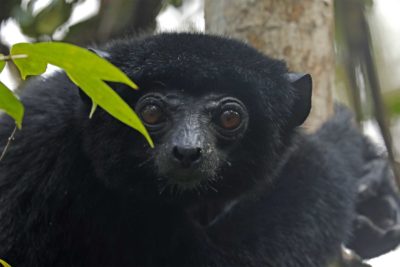A RAMSAR site, it is the newest designated National Park in Madagascar and one of its most unusual reserves. It comprises a milky blue 15-km long saline lake populated by pink and dwarf flamingos and other wading birds, with an adjacent limestone escarpment covered in rare pachypodium-dominated spiny forest displaying extreme adaptation to the arid environment.
Oddities include 2000 year-old, squat baobabs and a ficus tree grove with roots extending into a sinkhole river system, used by ring tailed lemurs to access drinking water. With 90 per cent of all resident species endemic to the park, it has the highest endemicity of any reserve on the island.
One species of fish is found here in the limestone cave river system which runs under the desert and spiny bush. It is a small, pink-white blind cave fish which feeds on plankton, crustaceans, and insects. There are rare avian endemics, three species of lemur including the ring-tailed (much more wild than those at Berenty), the rare radiated tortoise and the recently discovered, locally endemic Grandidier’s mongoose, first described in 1986.
An expedition to Tsimanampetsotsa can involve hot and bumpy travel and a bone-shaking ride by zebu cart. However, it is a rewarding and unforgettable experience, easily combined with a comfortable beach hotel at Ambola or Anakao.


















